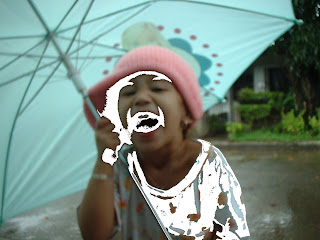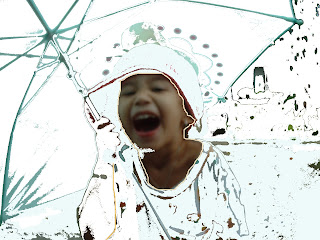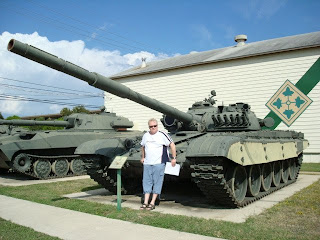I left off in the previous post explaining how my initial attempt at trail building turned out to be all for nothing. A strange thing is that I couldn't even recognize most of the route of it, much less see it. After just two days leaves and twigs had already covered over my efforts.
Then, while walking along over where my mislaid track should have been, I noticed something that switched on the old Eureka light bulb. There was one section that I still recognized as having been my intended trail. It was where I had to pick up a rather large rotten log and move it out of the way. Seeing it, I remembered that the path was parallel to it.
So maybe that was the answer! I could place branches and fallen logs end-to-end to mark one side of the path. I tried it and after 20 or 30 feet I knew it was perfect. There were plenty of fallen branches, twigs, and logs available; it was just for me to line them up. The first of many problems was solved—now the real trail making could begin.
Once I knew how to effectively delineate its course, I decided to make the initial trail head behind the massive Little Rock AFB commissary. There was a good spot at the commissary entrance cattycorner from the popular base Burger King. From the very back right parking lot it was just a matter of riding through a grassy area, turning to the right and into the woods where my trail would begin. From that point onward no one would be able to see the trail or me traversing it. Staying out of sight on my "unauthorized trail," especially while I was constructing it, was part of my goal.
Almost every day after work I’d head out to reconnoiter and trail build. The routine was simple: I’d figure out the general direction and then freeform the specific twists, turns, obstacles and jumps as I went along. It was hard, but it was a blast. Everyday brought new challenges and tasks. Three hours working on my trail went by like 20 minutes.
It was amazing that after riding back and forth over it a dozen times how the trail became quite traceable. My bike’s wheels rolling over the exact same surface over the identical inches-wide spot soon made it seem as if the trail had always been there rather than for just a few days.
I endeavored to make the single-track as challengingly difficult and therefore as “fun” as I could. I scouted ahead to find interesting bits of terrain to maximize the enjoyment by increasing the effort and adrenalin required to negotiate it. For instance, I never just followed a ridgeline; instead, I zigzagged directly down its slope before looping around a large rock or tree for the return back up. I never hair-pinned to lessen steepness like the Park Service does on its walking trails. I always sought to maximize gradient, never to lessen it. Doing that made for some hair-raising rides when flying directly downhill with trees, branches and foliage flashing past; while climbing straight back up caused the heart to pump and the breath to come in gasps. Awesome!
On my own tiny scale I felt like a road-building engineer as I came across new problems requiring new solutions. The terrain was amazingly varied in that relatively small area sandwiched between Flightline Drive and Arnold Drive. There were three different swamps, two large areas with dense patches of “Wait a Minute Vines,” three sorts of hill areas and a really cool stream that ran through a channel that in some places had 5-foot banks.
The three swamps and two thorn patches took the most time, effort and figuring to sort out and complete. One of the swampy areas ran through a thicket of 12-feet tall swamp willows. I had no choice but to figure out how to run the trail directly through it for about 100 feet.
You can’t just run a mountain bike trail through swamp mud. It ruts down ever deeper until it becomes impassable. Then it came to me: Rice paddies! I’d seen them on my visits to Southeast Asia and in Vietnam War documentaries. I remembered walking on narrow paddy dikes and realizing that they were made from the dried muck of the paddy. Could it really be so easy?
I bungystrapped a combat shovel and a pickaxe to my bike and headed to the swamp to see what I could do. Resigned to getting soaked and splattered, I wore my oldest combat boots. Right off the bat I ran into a problem with the willow tree roots. They were thick and matted, making it tough digging if not impossible. Shortly thereafter, I learned to search for semi-rootless pockets and dug as much of the free mud as I could from each one and began to pile it up on the embryonic dike.
It was slow going. I’d throw a shovel full of mud into the dike line and watch it melt back into the water. Eventually though it began to stack up enough so that I had a mound of oozing muck snaking through the shallow waters of the swamp. It felt like I was actually accomplishing something when it reached about a dozen feet long. Let's see, only about 60 feet to go! Yikes! A good thing about digging all the holes is that they began to drain the water away from the dike. Encouraged, I kept at it.
Then another idea came to mind. I got it after remembering how parts of the Great Wall of China had been built from layers of grass and earth. There was a pine copse not so far away carpeted deep with fallen needles. The next day I brought a heavy-duty hefty trash bag and began to use the pine needles between layers of muck. That did the trick.
In no time the muck dried into solid clay and in two weeks I had a perfectly rideable foot-wide foot-high dike meandering through the dank swamp. I was gratified that even during the wettest of times it held up and stayed at least several inches above the highest water level.I was proud of that problem/solution, but there were plenty more to come.
Then, while walking along over where my mislaid track should have been, I noticed something that switched on the old Eureka light bulb. There was one section that I still recognized as having been my intended trail. It was where I had to pick up a rather large rotten log and move it out of the way. Seeing it, I remembered that the path was parallel to it.
So maybe that was the answer! I could place branches and fallen logs end-to-end to mark one side of the path. I tried it and after 20 or 30 feet I knew it was perfect. There were plenty of fallen branches, twigs, and logs available; it was just for me to line them up. The first of many problems was solved—now the real trail making could begin.
Once I knew how to effectively delineate its course, I decided to make the initial trail head behind the massive Little Rock AFB commissary. There was a good spot at the commissary entrance cattycorner from the popular base Burger King. From the very back right parking lot it was just a matter of riding through a grassy area, turning to the right and into the woods where my trail would begin. From that point onward no one would be able to see the trail or me traversing it. Staying out of sight on my "unauthorized trail," especially while I was constructing it, was part of my goal.
Almost every day after work I’d head out to reconnoiter and trail build. The routine was simple: I’d figure out the general direction and then freeform the specific twists, turns, obstacles and jumps as I went along. It was hard, but it was a blast. Everyday brought new challenges and tasks. Three hours working on my trail went by like 20 minutes.
It was amazing that after riding back and forth over it a dozen times how the trail became quite traceable. My bike’s wheels rolling over the exact same surface over the identical inches-wide spot soon made it seem as if the trail had always been there rather than for just a few days.
I endeavored to make the single-track as challengingly difficult and therefore as “fun” as I could. I scouted ahead to find interesting bits of terrain to maximize the enjoyment by increasing the effort and adrenalin required to negotiate it. For instance, I never just followed a ridgeline; instead, I zigzagged directly down its slope before looping around a large rock or tree for the return back up. I never hair-pinned to lessen steepness like the Park Service does on its walking trails. I always sought to maximize gradient, never to lessen it. Doing that made for some hair-raising rides when flying directly downhill with trees, branches and foliage flashing past; while climbing straight back up caused the heart to pump and the breath to come in gasps. Awesome!
On my own tiny scale I felt like a road-building engineer as I came across new problems requiring new solutions. The terrain was amazingly varied in that relatively small area sandwiched between Flightline Drive and Arnold Drive. There were three different swamps, two large areas with dense patches of “Wait a Minute Vines,” three sorts of hill areas and a really cool stream that ran through a channel that in some places had 5-foot banks.
The three swamps and two thorn patches took the most time, effort and figuring to sort out and complete. One of the swampy areas ran through a thicket of 12-feet tall swamp willows. I had no choice but to figure out how to run the trail directly through it for about 100 feet.
You can’t just run a mountain bike trail through swamp mud. It ruts down ever deeper until it becomes impassable. Then it came to me: Rice paddies! I’d seen them on my visits to Southeast Asia and in Vietnam War documentaries. I remembered walking on narrow paddy dikes and realizing that they were made from the dried muck of the paddy. Could it really be so easy?
I bungystrapped a combat shovel and a pickaxe to my bike and headed to the swamp to see what I could do. Resigned to getting soaked and splattered, I wore my oldest combat boots. Right off the bat I ran into a problem with the willow tree roots. They were thick and matted, making it tough digging if not impossible. Shortly thereafter, I learned to search for semi-rootless pockets and dug as much of the free mud as I could from each one and began to pile it up on the embryonic dike.
It was slow going. I’d throw a shovel full of mud into the dike line and watch it melt back into the water. Eventually though it began to stack up enough so that I had a mound of oozing muck snaking through the shallow waters of the swamp. It felt like I was actually accomplishing something when it reached about a dozen feet long. Let's see, only about 60 feet to go! Yikes! A good thing about digging all the holes is that they began to drain the water away from the dike. Encouraged, I kept at it.
Then another idea came to mind. I got it after remembering how parts of the Great Wall of China had been built from layers of grass and earth. There was a pine copse not so far away carpeted deep with fallen needles. The next day I brought a heavy-duty hefty trash bag and began to use the pine needles between layers of muck. That did the trick.
In no time the muck dried into solid clay and in two weeks I had a perfectly rideable foot-wide foot-high dike meandering through the dank swamp. I was gratified that even during the wettest of times it held up and stayed at least several inches above the highest water level.I was proud of that problem/solution, but there were plenty more to come.








 Oops. A problem--the white fill bled into the face area.
Oops. A problem--the white fill bled into the face area.  The solution: Using the "paint brush" feature and dialing the tip to a proper shape and size I outlined the face to keep white from bleeding into it.
The solution: Using the "paint brush" feature and dialing the tip to a proper shape and size I outlined the face to keep white from bleeding into it. 
 I ended up having to outline other areas as well when the white fill would completely obscure their original shape. In the above case I had to outline the arm.
I ended up having to outline other areas as well when the white fill would completely obscure their original shape. In the above case I had to outline the arm.  Let the coloring begin!
Let the coloring begin! 
 From that to....
From that to.... ....to....
....to.... Notice how we left the faces untouched, although we did moderate the tone of my youngest's face to give our work of art a kind of toned down "colored" look. If you've got kids give it a try. Mine love coloring themselves and their daddy too. I admit, I helped 'em color. Couldn't resist it...
Notice how we left the faces untouched, although we did moderate the tone of my youngest's face to give our work of art a kind of toned down "colored" look. If you've got kids give it a try. Mine love coloring themselves and their daddy too. I admit, I helped 'em color. Couldn't resist it... 















